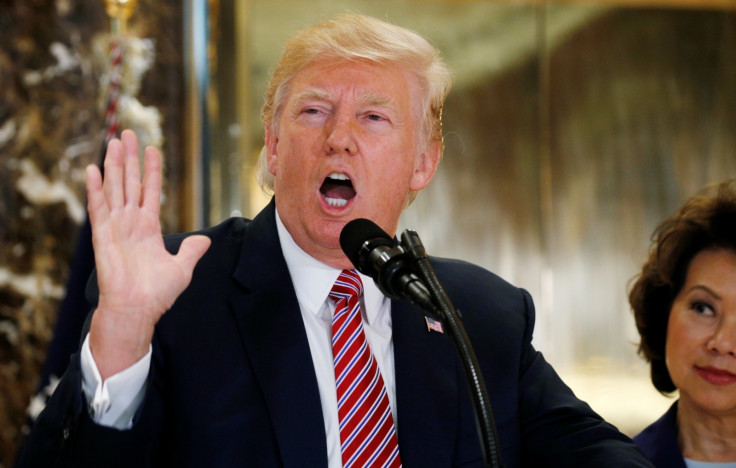What is the alt-left? And who are they?
Donald Trump blamed some of the violence in Charlottesville on the alt-left.
The phrase 'alt-right' has been part of the mainstream political vocabulary for some time now, but on Tuesday evening (15 August), Donald Trump discussed the rise of the alt-left. But what are they?
Speaking from Trump Tower for the first time since becoming president in January, Trump addressed reporters in front of his golden elevators to backtrack on a Monday's statement that condemned Nazis and white supremacists.
Trump said the blame for the violence in Charlottesville had to be shared between both sides of the rallies, including what he described as the "alt-left".
He said: "What about the alt-left that came charging at, as you say, at the alt-right?
"I think there's blame on both sides. And I have no doubt about it."
The term 'alt-left' has been used for a number of months now by right-wing commentators often describing anti-Trump protesters and activists such as those involved with Black Lives Matter.
But it is most commonly associated with the anti-fascists (Antifa), who have gathered at times to counter far-right protests and rallies, some of which have turned violent.
Antifa and Black Lives Matter have often targeted. On Tuesday David Duke, the former Grand Wizard of the KKK, mentioned them in a tweet while thanking Trump for his Charlottesville u-turn.
Duke said: "Thank you President Trump for your honesty & courage to tell the truth about Charlottesville & condemn the leftist terrorists in BLM/Antifa."
Members of Black Lives Matter and similar organisations tend to distance themselves from the violent tendencies of the far-left, who can turn up at big political events often to just cause trouble.
Notably there were violent scenes on the streets of Washington on the day of Trump's inauguration as well as at the University of California at Berkeley over a planned speech by then-Breitbart editor Milo Yiannopoulos.
Instances of far-left violence have been isolated and often are aimed specifically at countering far-right marches, which was the case in Charlottesville – but these few instances are being used as targets by the pro-Trump supporters.
In Charlottesville, the majority of the left-wing supporters who were in attendance, turned up and protested peacefully.
This is in contrast to Alex Fields, the alleged neo-Nazi who seemingly killed a woman when he ploughed his car into a crowd.
The below chart shows that Google searches for 'alt-left' have surged in the past 24 hours, but on the whole, it has been a term that has been hardly mentioned compared to alt-right.
The difference between the two terms is that alt-right is a phrase coined by the very members who are involved in the movement, whereas alt-left is a phrase coined by the alt-right to describe their opponents.
Trump's use of language is closely analysed with every tweet and speech he issues, and the way he dealt with the violence in Charlottesville has been very telling.
Trump initially blamed "many sides" for the violence, which lead to the death of at least one person and left another 19 injured.
On Monday, after increasing political pressure, Trump condemned white supremacist groups and neo-Nazis.
But those words were undone on Tuesday when he said: "You had a group on the other side that came charging in without a permit and they were very, very violent."

© Copyright IBTimes 2024. All rights reserved.






